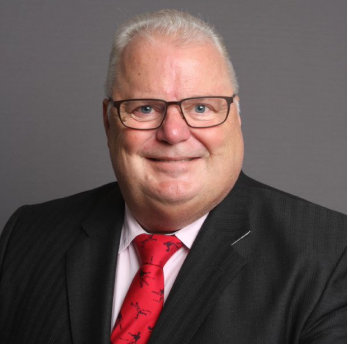Paul Tomlinson, CEO and Founder of IEG4 Limited, techUK Local Public Services Committee Chair, continues to argue that technology is not the inhibiting factor in the delivery of Place-based Care. Rather, it’s politics, people and perfectionism that are stifling.
What are we waiting for?
In part one, I suggested that there is evidence that social care services can be more cost-effective than medical interventions, but that people and politics keep investment in the NHS ringfenced, whilst arguably, if this investment was shifted, it could be more effective. There is widespread recognition that the current trajectory of dependency on our health and social care system is not only undesirable but will also become unaffordable. At least the dilemma has been recognised, politically, by the change in ministerial title to the Secretary of State for Health and Social Care.
So, what are we waiting for?
Is the desire for ‘perfectionism’, that is for the equivalency of today’s physical services to be delivered digitally, holding us back from taking the first steps? Are people, wrapped up in the work of their individual business units, putting their ‘work’ interests ahead of the needs of the citizen? Is the politics of funding and budgets, the split of funds between NHS and Local Government, inhibiting acceptance that costs on one silo may be significantly altered by the actions (investment) of another? Is the fear of change to digital working itself, and the risks that it entails in whole-service change, the excuse to prop up the status quo? I would say all of these would seem to be at play.
In 2019, the World Wide Web celebrated its 30th anniversary. A BBC montage of technology developments made me re-examine the ‘revolution’ which put users in control and turned established delivery models on their heads.
Revolution started for that internet generation of the 90s, with the buzzes, burbles and frustrations of waiting to connect to the World Wide Web via a dial-up line through something called a modem or, for the silver haired reader, the acoustic coupler – anyone try to use an acoustic coupler on a trim phone…?
Technology in the early 90s was primitive. By today’s 4G and superfast broadband standards, it was pre-historic, but it didn’t hold back the visionaries from building services.
Nor did the revolution mean that physical infrastructures disappeared over night, or, that organisations didn’t also trade or offer services as they had always done. No, the revolution of the World Wide Web has played out in incremental steps over three decades. We didn’t deliver perfection overnight.
Turning to integrated Health and Social Services…
Local authorities currently have a head start in acting as the focal point for their citizens. People expect to find helpful services provided by their councils. There is an inherent level of trust in the service offer, and a local focus with a democratic core that is unique.
Designing a service around the needs and preferences of the user would mean that many people could intelligently self-serve, using technology available and proven today. Self-assessment tools offered by a local authority, as a trusted provider, would help individual service users identify their specific support needs. Those who need more significant support could be sign-posted to the appropriate professionals.
A Service Finder, designed to help the individual user, would enquire against a place-based Directory of Services. It would help filter out irrelevant services and enable the individual user to engage with the service provider.
Service providers would maintain accurate information about their facility, because Service Finder is their shop window. They would also only need to provide service information once. The same information could be republished, many times, recognising that there could be multiple service listings as others may maintain their own views of what is a trusted resource.
Local GP practices, who have trust in the benefits of specific, often non-medical services for their patients, may choose to prescribe these as course of treatment. Like a medical prescription, there’s a cost to the patient and cost to the system. But in many cases social prescription is cheaper, if it changes a life’s trajectory. Witness now, the emerging scale and cost of opioid prescription and addiction.
For those on prescription or who are eligible for social support, completing the attendance feedback loop from service provider to service prescriber is in the interest of the service provider. Financial support to deliver the service depends upon it.
Even with a digital revolution, ‘physical delivery’ has a long, long future
Any new tech-based delivery model will co-exist for a long time alongside the physical infrastructure. If the physical infrastructure continues to adapt its offer and delivers value to the individual service user, it will survive.
People in their individual units and siloed organisations should be excited by the prospect of re-imagined services. There will be plenty to do in the on-going journey.
No Word Police this time but, look out for more thoughts in part three.

